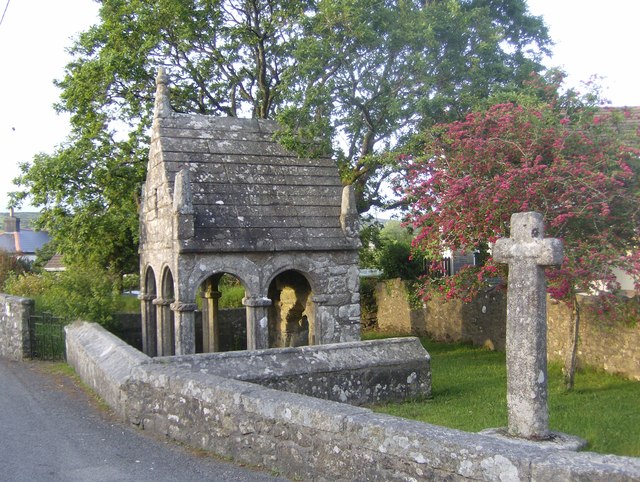St Cleer Holy Well
Introduction
The photograph on this page of St Cleer Holy Well by cornisharchive as part of the Geograph project.
The Geograph project started in 2005 with the aim of publishing, organising and preserving representative images for every square kilometre of Great Britain, Ireland and the Isle of Man.
There are currently over 7.5m images from over 14,400 individuals and you can help contribute to the project by visiting https://www.geograph.org.uk

Image: © cornisharchive Taken: 1 Jun 2012
The St. Cleer holy well stands on the spot of a natural spring, and an ancient cross about 9 feet high stands a few feet from the well itself. The cross is a Latin cross, not celtic in origin. The well takes its name from the village of St. Cleer which is named variously after many possible saints. The commonly held belief is that of St. Clarus who is believed to have sanctified the holy well and cross. Clarus was born in Rochester in the 9th century and went to Normandy becoming a Benedictine monk. A noblewoman whose advances he rejected had him beheaded. His feast day is given as 4th November which just so happens to be the feast day of St. Clether, also known as cleer and claris! Another belief is that it was St. Clare, a 12th century disciple of St. Francis. A more interesting and I think more likely offering is that of the Knight Ingelram de Bray of St Clair sur epte who built a new church in St. Cleer in 1250 after he married the heiress of the nearby Manor of Rosecraddoc, dedicating it to his birthplace. This knight also built a granite chapel to cover the well, but this was destroyed by fanatics in the Civil War and the site lay in ruins for some 200 years. Restoration was carried out in 1864 as a memorial to the Rev. John Jope, for 67 years the vicar of St. Cleer. The well is said to have been used as a boussening or ducking pool to allow for complete immersion. The healing powers of the well were said to be for the curing of insanity, rickets and epilepsy. An annual well dressing ceremony is held at the site, and locals and visitors join with children from village schools to dress the well and ring hand bells, the event this year being on May 25th. A number of references are made to the fact that attempts have been made to remove and cart away stones from the chapel, but mysterious power has always returned them at night! The well is grade I listed, along with the front wall and cross.

